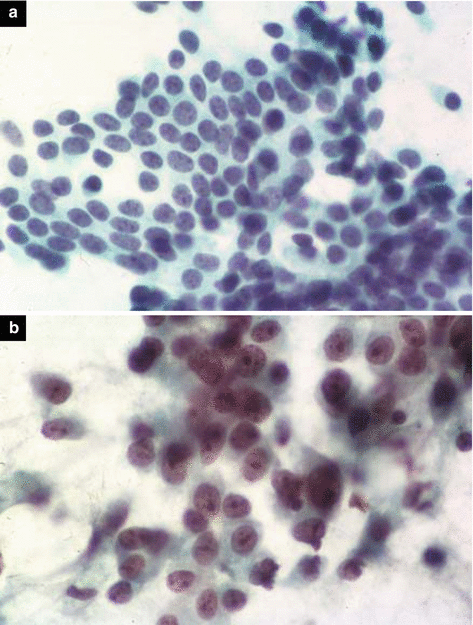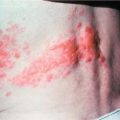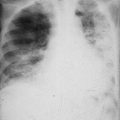and Karl Reinhard Aigner3
(1)
Department of Surgery, The University of Sydney, Mosman, NSW, Australia
(2)
The Royal Prince Alfred and Sydney Hospitals, Mosman, NSW, Australia
(3)
Department of Surgical Oncology, Medias Clinic Surgical Oncology, Burghausen, Germany
In this chapter you will learn about:
Prevalence of cancer
Benign and malignant tumours
Dangers of malignant tumours
What causes malignancy
A malignant growth is characterised by a continuing, purposeless, unwanted, uncontrolled and damaging growth of cells that differ structurally and functionally from the normal cells from which they developed.
The commonly used term for a malignant growth is a cancer – cancer is Latin for crab. The condition was called cancer in ancient times because an advanced cancer was thought to resemble a crab, with “claws” reaching out into surrounding tissues.
Cancer is Latin for crab.
All living plants and animals are composed of living cells that often need to divide to produce more cells for growth and development and also to replace cells that have been damaged or have died. The process of cell proliferation (cell division and cell growth) is controlled by genes in the DNA of the cell nucleus. The genes are inherited from parents and bestow particular features in the offspring, including height, colour, weight and countless other distinctive features and functions of the tissues. The process is normally under remarkably well-balanced control. A cancer forms when this genetic control is damaged or lost in one or more cells, which then continue to divide and divide again, producing more abnormal cells that continue to divide and increase in number when and where they should not. The masses of unwanted dividing cells cause damage to other cells and tissues in the body. They are no longer controlled by normal genes that stop division after normal body needs have been met. They just go on dividing in spite of causing damage to other tissues and body functions. This is a cancer. All the causes of cancer are now known to directly, or indirectly, damage these normal genes that regulate cell division.
One obvious factor is that the longer we live, the more chance there is for the genes that regulate cell proliferation to become damaged by exposure to agents that damage the genetic blueprint, DNA. So most cancers become more common the longer we live; most cancers are more common in old age. Another factor is the rate of division for growth and replacement of tissues. Tissues like skin, bowel lining or lining of air passages (especially in the lungs) and blood cells are constantly being shed and replenished. Breast cells are constantly changing due to hormone activity over a woman’s years of fertile life. With all this constant cell proliferation, there is more likelihood of mistakes being made in the process of copying the genetic blueprint to daughter cells, especially as the process becomes less accurate as we get older. A mistake or error in copying the genetic blueprint is called a genetic mutation. These then are the tissues most likely to undergo malignant change. Bone growth is greatest in growing young people, and testicular activity is greatest in young adult males, and these are the periods of life most prone to cancers of these tissues. As men grow old, the slow but constant changes in the prostate gland make it more likely that factors causing a change in cells might go wrong after years of exposure to the driving force of male hormones. So prostate cancer becomes increasingly common in old age.
The remarkable thing is not that something goes wrong from time to time in the delicate process of cell division but that things don’t go wrong more often. In all life, there is a continuous delicate living process involving countless generations of cell division. The better we care for our bodies with good living practices, the greater the likelihood of preventing something, possibly uncontrollable, from seriously going wrong.
These good living practices include having good nutrition, healthy exercise, safe sex and avoiding exposure to potentially damaging agents in our environment. All of these practices serve to reduce the exposure of the genetic material in cells to agents that could cause changes in the genetic blueprint.
In the normal genetic make-up, there is a braking mechanism to stop cell division when the need for more cells has been satisfied.
Whilst most normal body tissues are composed of cells that have the ability to grow or reproduce, they normally only do so when there is a need. When this need has been satisfied, they stop reproducing. In the normal cell, there is a braking mechanism to stop cell division when the need for more cells has been satisfied. Cells in such tissues as the skin or blood or the lining of the mouth, throat or alimentary tract wear out quickly and are constantly being replaced. They are normally replaced only to meet the immediate need of the body, after which reproduction stops. Also, after injury or cell death, surrounding cells reproduce to replace and repair damaged tissues, but there is an inbuilt mechanism that stops the cell reproduction once the injury has been repaired and the wound has healed. The “switch-on” and “switch-off” mechanisms are governed by two different types of genes, whose functions are either to promote or to suppress cell division and cell growth. These are called proto-oncogenes and tumour suppressors. Proto-oncogenes respond to growth signals and are positive regulators of cell proliferation, only in the presence of appropriate growth signals. Tumour suppressor genes conversely act as negative regulators of cell growth and suppress or check the unregulated growth of cells. So in the normal cell, the “switch-off” mechanism is the response to the absence of specific growth signals.
Some, but not all, body tissues retain a lifelong ability to replicate themselves to meet the body needs. For example, after surgical removal of as much as three quarters of a normal liver, the remaining liver will grow back to its original size within about 6 weeks and then stop. The nature of the “switch-off” mechanism is not fully understood – but it is clearly a critically important process that is normally under genetic control.
In the case of a malignancy, there is no “switching-off” mechanism. Some of the proto-oncogenes have now acquired mutations that mean they promote cell growth even in the absence of appropriate growth signals, i.e. they become oncogenes (cancer-promoting genes), and some of the tumour suppressor genes are inactivated, such that abnormal growth goes unchecked. Abnormal and unwanted cells then invade into surrounding tissues and possibly blood and lymph vessels, or body cavities, thereby spreading to other parts of the body, where they establish new damaging colonies of unwanted growing cells. These colonies are called secondary or metastatic cancers, known as secondaries or metastases.
1.1 Nature of a Malignancy
A malignancy is therefore totally different from an infection, which is caused by organisms from outside the body invading body tissues and causing damage. The body defences recognise invading organisms as foreign and protective measures are set in train to destroy them. Invading cancer cells, on the other hand, are abnormal cells that have developed from the body’s own cells and are therefore allowed to further develop and infiltrate other tissues without the control normally provided by natural body defences.
Cancer cells also have different features and take on a different microscopic appearance from the cells from which they developed. Cancer cells become bizarre in size, shape and other features. As a rule, the more bizarre they become, the more aggressive and malignant is their behaviour. Cancer cells are usually derived from a single original cell and are said to show a clonal origin. The nucleus is often irregular, larger and darker in colour and may even be duplicated in the one cell. The cytoplasm is often relatively smaller, irregular in size and shape and without the special features of the cell of origin. There may be cells not only of different sizes and shapes but also with different staining properties (pleomorphic). These changes are brought about by changes in the tumour suppressor genes and oncogenes that are responsible for the control of cell division.
Exercise
Study the cells in Fig. 1.1. In what ways do cells differ in Fig. 1.1a, b?


Fig. 1.1
Photomicrographs showing (a) breast cells of normal appearance aspirated from a benign breast lump and (b) highly malignant anaplastic breast cancer cells aspirated from a breast cancer (400×)
. . . . . . . . . . . . . . . . . . . . . . . . . . . . . . . . . . . . . . . . . . . . . . . . . . . . . . . . . . . . . . . . . . . . . . . . . . . . . . . . . . . . . . . . . . . . . . . . . . . . . . . . . . . . . . . . . . . . . . . . . . . . . . . . . . . . . . . . . . . . . . . . . . . . . . . . . . . . . . . . . . . . . . . . . . . . . . . . . . . . . . . . . . . . . . . . . . . . . . . . . . . . . . . . . . . . . . . . . . . . . . . . . . . . . . . . . . . . . . . . . . . . . . . . . . . . . . . . . . . . . . . . . . . . . . . . . . . . . . . . . . . . . . . .
1.2 What Is the Prevalence of Cancer?
Cancer is known to occur in all societies and in all parts of the world. It affects animals as well as man. In humans, cancer is known to have been present in ancient times as well as in modern communities. However, the types of cancer most prevalent in a community will vary with the age, sex distribution and race of people in the community, as well as the geographical situation, the economic and environmental situation and the habits of the people including their diets. (See Appendix showing incidence of different cancers in different countries.)
In developed countries, cancer is responsible for about 25–30 % of deaths. It is second to cardiovascular disease as a cause of death. Young people in developed societies are much more at risk of dying from causes other than cancer such as infectious diseases (including AIDS) or as a result of trauma (especially accidents in homes or on the roads, gunshot wounds or suicide) than from cancer. Although cancer can occur at any age, it is relatively uncommon before the age of 40 years; but as people grow older, the risk of cancer progressively increases.
Stay updated, free articles. Join our Telegram channel

Full access? Get Clinical Tree







